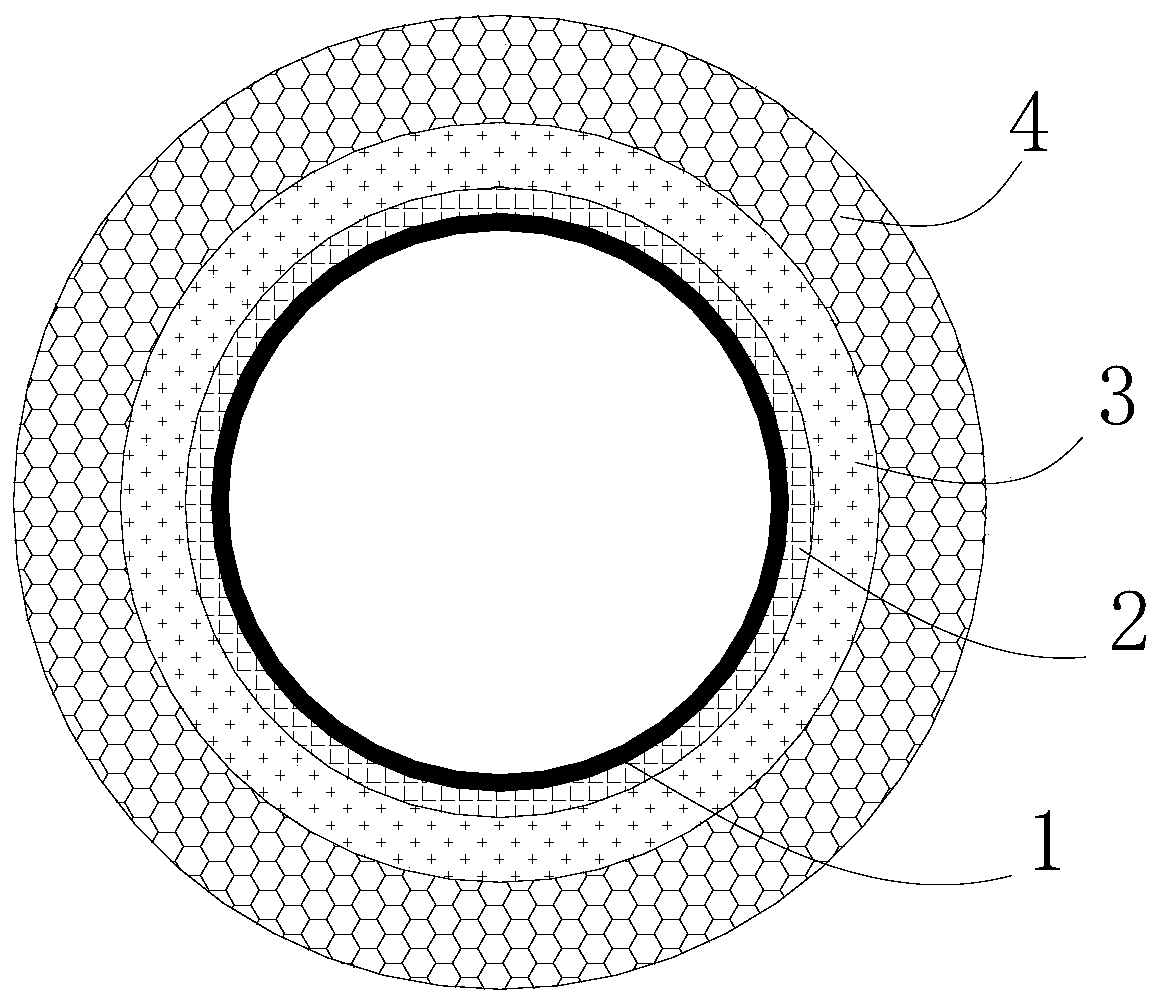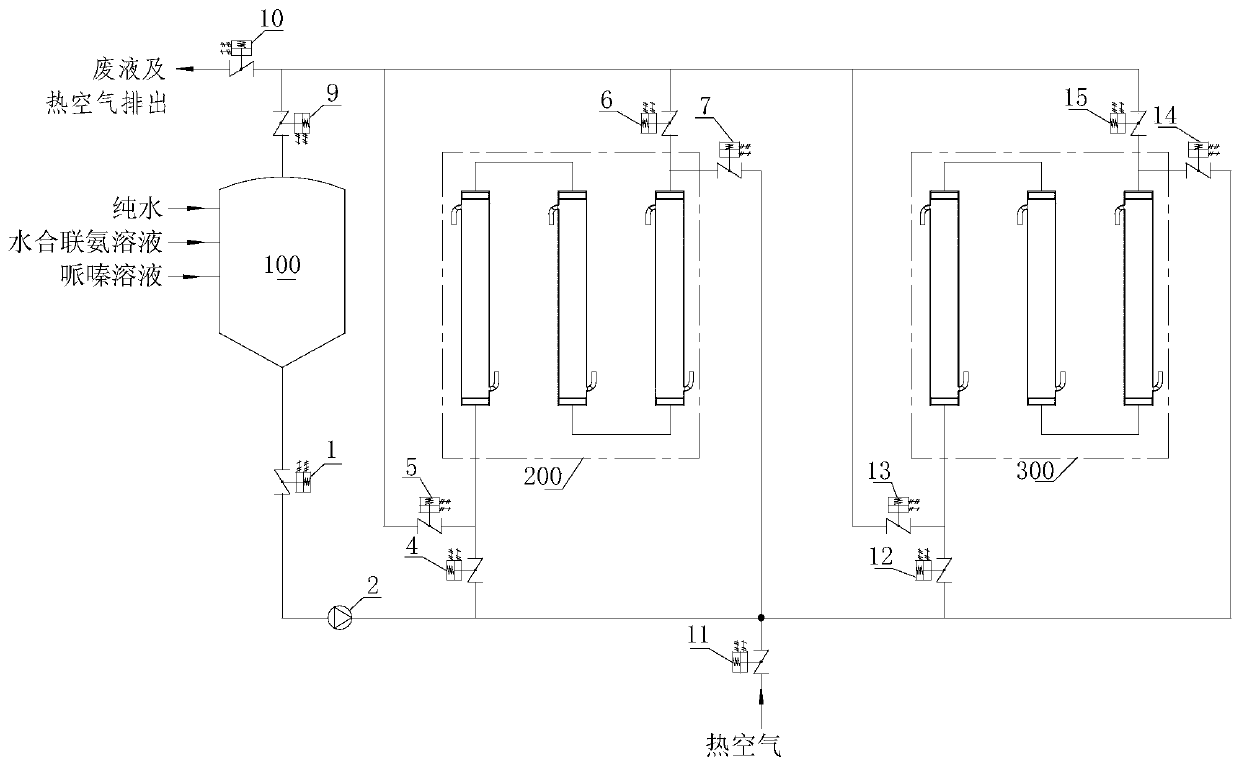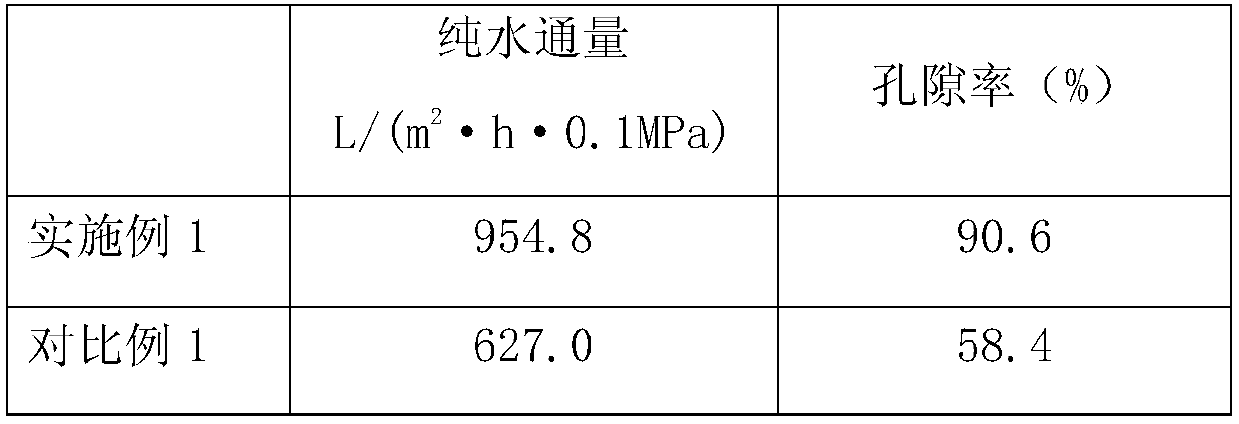A method for preparing solvent-resistant organic tubular nanofiltration membranes by bidirectional circulation perfusion
A two-way circulation and nanofiltration membrane technology, applied in chemical instruments and methods, membrane technology, semi-permeable membrane separation, etc., to achieve enhanced solvent resistance, improved thermal stability, solvent resistance, and good rigidity
- Summary
- Abstract
- Description
- Claims
- Application Information
AI Technical Summary
Problems solved by technology
Method used
Image
Examples
Embodiment 1
[0036] 15wt% polyacrylonitrile, 10wt% lithium chloride and 75wt% N-methylpyrrolidone were kept and stirred at 30°C at a stirring speed of 100rpm for 12h to obtain the casting solution; Put it together with the non-woven fabric on a tubular film scraping machine and coil the film at 30°C to form a tubular film. The feeding speed is 0.5mL / min, and the coiling speed is 0.5m / min. Place in the air, and after the solvent evaporates, quickly immerse in deionized water at a temperature of 20°C for phase inversion to form a polyacrylonitrile tubular base membrane; prepare the prepared polyacrylonitrile tubular base membrane into a stainless steel supported component.
Embodiment 2
[0040] 17wt% polyacrylonitrile, 6.5wt% lithium chloride and 76.5wt% N,N-dimethylformamide were kept and stirred at 50°C at a stirring speed of 500rpm for 24h to obtain a casting solution; the casting solution was statically After defoaming for 24 hours, place the pretreated non-woven fabric on a tubular film scraping machine at 50°C for film coating, the feeding speed is 4.5mL / min, and the film rolling speed is 4.5m / min. The tubular membrane is placed in the air, and after the solvent is volatilized, it is quickly immersed in a 10wt% ethanol solution at a temperature of 20 ° C to form a polyacrylonitrile tubular base membrane; the prepared polyacrylonitrile tubular base membrane is prepared into a stainless steel supported components.
Embodiment 3
[0042] 30wt% polyacrylonitrile, 1wt% zinc chloride and 69wt% N,N-dimethylacetamide were kept and stirred at 70°C at a stirring speed of 1000rpm for 48h to obtain the casting solution; After soaking for 48 hours, put it together with the pretreated non-woven fabric on a tubular film scraping machine at 70°C to roll the tube to coat the film. The feeding speed is 10ml / min, and the film rolling speed is 10m / min. In the air, after the solvent volatilizes, quickly immerse in a 20wt% isopropanol solution at a temperature of 50 ° C to form a polyacrylonitrile tubular basement membrane; prepare the prepared polyacrylonitrile tubular basement membrane into a stainless steel supported component.
[0043] The basement membrane filtration properties of Example 1 and Comparative Example 1 are shown in Table 1.
[0044] Chemical modification and interfacial polymerization of tubular basement membranes:
PUM
| Property | Measurement | Unit |
|---|---|---|
| diameter | aaaaa | aaaaa |
Abstract
Description
Claims
Application Information
 Login to View More
Login to View More - R&D
- Intellectual Property
- Life Sciences
- Materials
- Tech Scout
- Unparalleled Data Quality
- Higher Quality Content
- 60% Fewer Hallucinations
Browse by: Latest US Patents, China's latest patents, Technical Efficacy Thesaurus, Application Domain, Technology Topic, Popular Technical Reports.
© 2025 PatSnap. All rights reserved.Legal|Privacy policy|Modern Slavery Act Transparency Statement|Sitemap|About US| Contact US: help@patsnap.com



